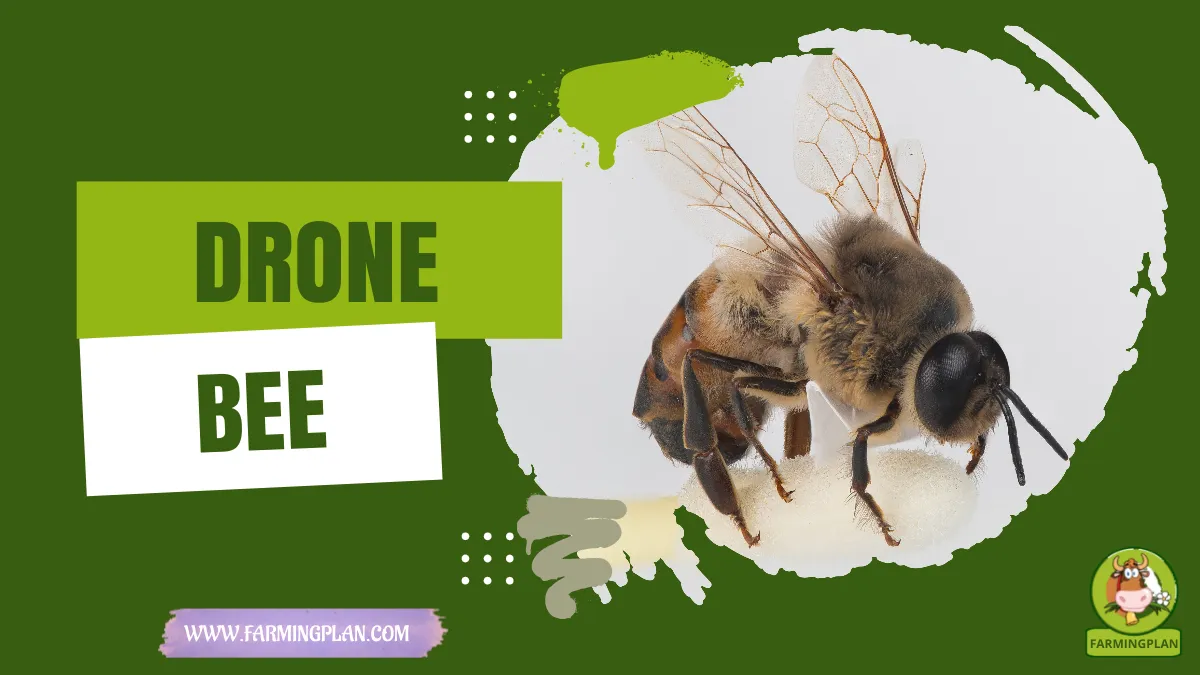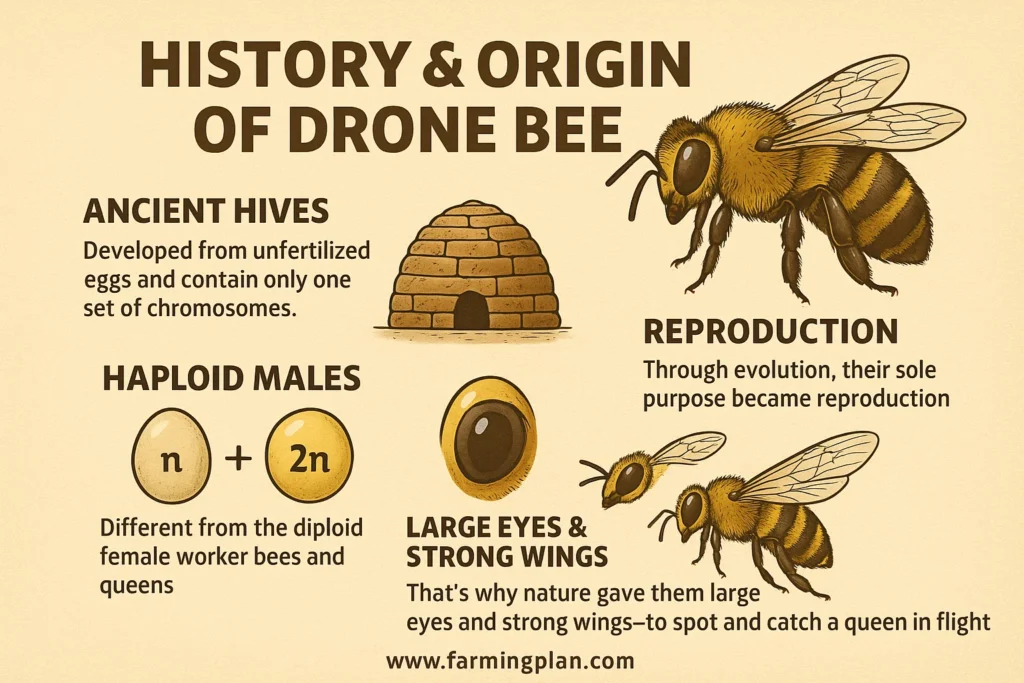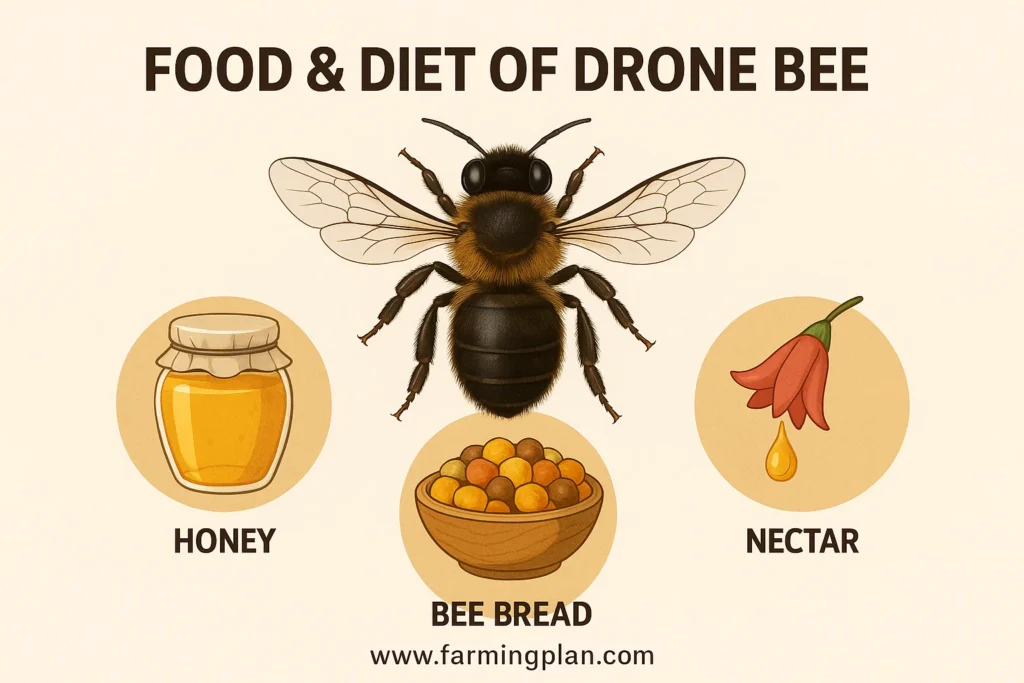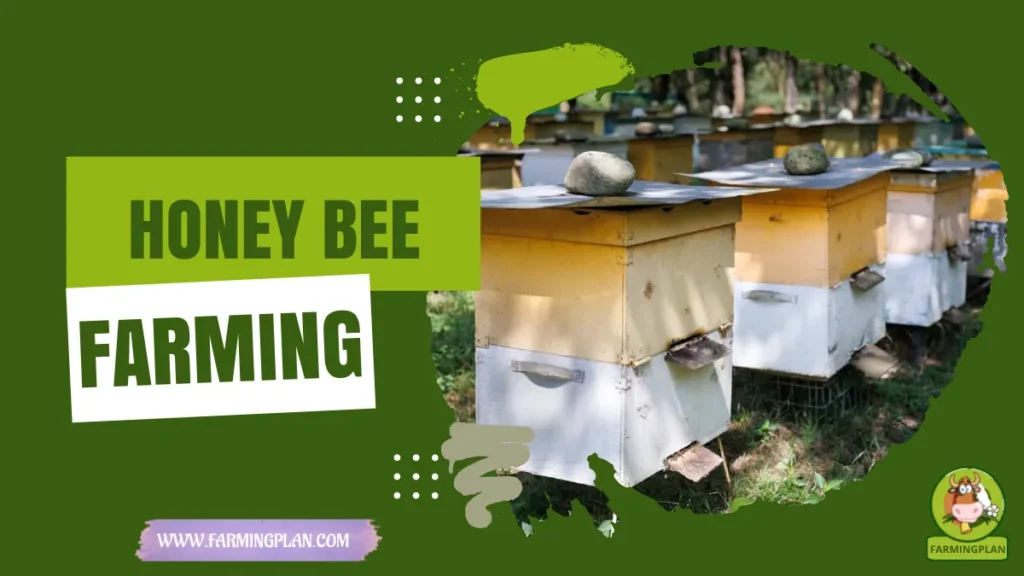Let’s talk about one of the most misunderstood characters in the hive—the drone bee. You’ve probably heard a lot about worker bees and queen bees, but drone bees are just as important in their own right. While they don’t collect pollen or protect the hive, they play a key role in one powerful task: mating with the Virgin Queen to ensure the next generation of honey bees. In this guide, I’ll break down the drone bee’s purpose, behavior, lifespan, and how they fit into the grand plan of a healthy colony. Whether you’re a beekeeper, farmer, hobbyist, or just a curious nature lover, this article will help you understand drone bees from a whole new angle.

History & Origin
Drone bees, the unsung heroes of the hive, have been a part of honey bee colonies for millions of years. Unlike their worker bee counterparts, who evolved to manage the hive and forage, drones evolved with a singular purpose: genetic diversity. Their unique traits and evolutionary journeys make them a fascinating subject of study and admiration.

Ancient hives show that drone bees developed from unfertilized eggs and contain only one set of chromosomes. This makes them haploid males, different from the diploid female worker bees and queens. Through evolution, their sole purpose became reproduction. That’s why nature gave them large eyes and strong wings—to spot and catch a queen in flight.
Scientists and researchers, including those at Wicwas Press, have long studied drones to understand how mating flights impact hive health and queen bee genetics. Thanks to those studies, we now know how crucial drones are in producing multiple-drone inseminated queens, which make stronger, longer-living hives.
Read More: Castellana Negra Chicken: Bold Beauty Of Spanish Breeds
Characteristics
Drone bees are quite different in appearance and structure compared to workers or the queen. First off, they’re larger and more barrel-shaped. Their big, bulging eyes are a dead giveaway—designed for tracking queens midair during nuptial flights. These large eyes are also a key to identifying a drone in your hive. They have no pollen baskets, no stinger, and no wax glands.
In other words, they don’t gather food or help build honeycomb. Their thorax is powerful, giving them the wing strength to fly fast and far. And their abdomen is blunter and rounder than other bees. Inside the hive, you’ll find them developing in special drone cells, which are larger than regular worker cells. Drones hatch from unfertilized eggs and don’t require royal jelly beyond the first few days. They reach sexual maturity in about 10–14 days.
Nature & Temperament
Drone bees, with their calm and laid-back temperament, are a reassuring presence in the hive. Their lack of stingers means they pose no threat to humans or other bees. You’ll often find them lounging around the hive or taking short, leisurely flights, adding a sense of tranquility to the bustling hive. They’re not aggressive and don’t participate in hive defense.
That job’s for the female worker bees. Their primary behavior is centered around mating—every day, mature drones fly out in the early afternoon looking for Drone Congregation Areas (DCAs) where queens are likely to pass. In my own hives, I’ve found that drone bees seem friendlier than workers. They’ll crawl onto your hand without panicking. But don’t mistake their chill attitude for uselessness—they’re genetically wired for one mission, and when that time comes, they rise to the occasion.
Food & Diet
Drones are completely reliant on the hive for food. They don’t forage, so worker bees feed them. Their diet mainly includes honey, nectar, and a mix of bee bread (a blend of pollen and nectar). Drones consume more food than workers, which can be a drain during nectar shortages.

That’s why beekeepers sometimes limit drone populations during the off-season. Too many drones = too much food-gone. Avoid feeding them directly. I always tell beginner beekeepers: support the colony, and the colony will support its drones. A balanced diet rich in pollen access helps drones grow strong for flight and mating.
Usage & Purpose
Drone bees, with their singular focus on mating with a queen, may seem to have a simple role. However, this role is of utmost importance to the success of every colony. Without drones, queens wouldn’t be able to mate, and the future of the hive would be in jeopardy. Their unique contribution to the hive’s life cycle inspires a sense of awe and respect.
A queen mates only once in her life, often with 10–20 drones during one mating flight. These drones sacrifice themselves in the process—their abdominal muscles rupture after insemination. But that’s the price of passing on their genes.
In controlled settings, beekeepers use drones for instrumental insemination to produce genetically strong queens. Even though they don’t work like others, their genetic contribution affects everything from disease resistance to hive productivity.
Special Features
Drone bees may seem lazy, but they come with some fascinating traits:
- Huge Eyes: Perfect for spotting queens during flight.
- No Stinger: Totally harmless to humans and other bees.
- Single Set of Chromosomes: Makes them vital for genetic research and selective breeding.
- Short Lifespan: Only live a few weeks unless they mate—then they die instantly.
- Drone Congregation Areas (DCAs): Natural, unseen fly zones where drones gather daily.
They also have unique accessory gland products used in insemination fluid that influence queen physiology, like ovary development and pheromone production. It’s pretty amazing for a bee that doesn’t work or sting!
Read More: Shetland Sheep: Colorful, Hardy & Full of Charm
Health Issues & Prevention
Even though drones don’t work outside the hive, they can still suffer from several health issues. One common problem is the Deformed Wing Virus (DWV), which leads to crumpled wings and the inability to fly. DWV is often linked with Varroa mite infestations. Another issue is poor nutrition. Since they rely on workers to feed them, if the hive’s food supply is low, drones are often kicked out. This is called drone eviction and usually happens in the fall or during droughts.

To keep drone bees healthy:
- Monitor for Varroa mites using sugar rolls or alcohol washes.
- Ensure the colony has good access to pollen for protein.
- Avoid overpopulating drones in small hives—too many can cause imbalance.
In my hives, I check for drone brood during inspections. If I find too many drones, I’ll cut back drone comb to prevent resource strain.
Step-by-Step Drone Bee Farming & Hive Management Guide
Step 1: Start With A Strong Queen
Start by selecting a queen bee known for healthy drone production. A genetically strong queen produces drones with excellent flight and reproductive traits. Look for queens with a history of multiple-drone mating success. Please keep her in a large enough hive (at least two deep boxes) to support drone development. Feed the hive well during early spring buildup.
Step 2: Create Drone Cells
Use a drone foundation or allow natural comb building to encourage drone cells. These are larger than worker cells and are usually built near the bottom of the frame. Rotate drone frames in and out every few weeks. This lets you manage Varroa mite control while maintaining a healthy drone population.
Step 3: Ensure Optimal Nutrition
Provide supplemental pollen patties if natural pollen is low. A good balance of carbs and proteins ensures drones develop fully. I also use syrup feeding in early spring to boost egg-laying and support the colony while drones are maturing.
Step 4: Monitor Sexual Maturity & Flight Behavior
Drones take about 10–14 days to reach maturity. Once mature, you’ll see them flying out daily in search of DCAs. Ensure there’s enough open space around your apiary. Avoid placing hives near dense trees—drones need wide-open air for nuptial flights.
Step 5: Use or Remove Drones Strategically
If you’re breeding queens, let the drones do their thing. Monitor their behavior and record any successful queen-mating flights. If not breeding, consider removing some drone brood to focus resources on worker production. This helps keep the colony balanced, especially in smaller setups.
Expert Tips & Best Practices
- Drone frames are used for both breeding and mite control.
- Don’t panic if you see lots of drones in spring—it’s normal.
- Encourage pollen-rich flowers around your apiary to improve drone health.
- Mark frames with heavy drone brood and rotate them to control the population.
- Watch for DWV signs—misshapen wings are a big red flag.
FAQs
What Do Drone Bees Do in a Hive?
They exist solely to mate with the queen. They don’t collect pollen, defend the hive, or make honey.
How Long Do Drone Bees Live?
On average, drones live around 30–40 days. If they mate, they die instantly after insemination.
Can Drone Bees Sting?
Nope! Drones don’t have stingers, so they’re completely harmless.
How Many Drone Bees Are In A Hive?
A typical hive has 300–2,000 drones during peak season, depending on colony size and purpose.
Why Are Drone Bees Kicked Out In Fall?
When resources get scarce, workers evict drones since they don’t contribute to food storage or winter survival.
Conclusion
Drone bees might not work like the others, but their contribution to the hive is essential. Without drones, there’s no mating, no queens, and no new generations of honey bees. From their powerful flight muscles to their role in passing on healthy genetics, drone bees are unsung heroes of the hive. As a beekeeper, understanding how to manage and support them can make all the difference in breeding success and colony health. Whether you’re raising bees for honey, pollination, or queen production, keep an eye on your drones—they’re your hive’s future fathers.

